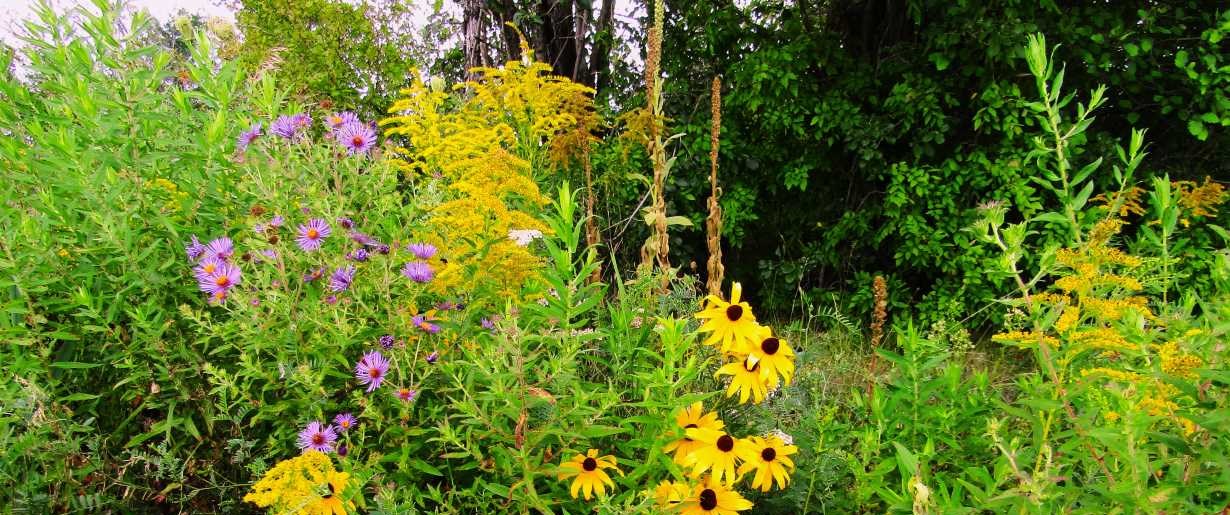Roadside Restoration
Lanark County’s long-term vegetation goal is to establish diverse roadsides with abundant pollinator habitat. We restore our roadsides by controlling invasive plants, planting or seeding disturbed soil, and by participating in new projects aimed at improving pollinator habitat.
Monitoring
Each year, staff track pollinator habitat along our roadways using the Rights-of-Ways as Habitat Working Group scorecard. This tracking allows us to monitor progress of our restoration efforts and help decide where to focus new restoration projects.
Passive and Active Restoration
Roadside restoration is completed through two methods of restoration:
Passive Restoration is used in the road allowance through a combination of mowing practices and invasive plant control. By removing invasive species this allows for other vegetation to naturalize. To learn more about how we manage invasive vegetation, visit our Vegetation Management Plan page.
Active Restoration is done through hydroseeding native seeds after construction projects, seeding after the removal of invasive plants, and CWF Monarch Habitat Restoration projects in the county road allowance.
Roadside Seeding and Planting
Following construction, we hydroseed bare soil with an improved hydroseeding mix, which includes plants for pollinators. We also restore roadside sites with pollinator habitat using a native seed mix that includes 24 different species of Ontario native grasses and wildflowers. By planting and seeding, we aim to fill the space with desirable vegetation before invasive and undesirable species can establish themselves.
NAPPC Pollinators Roadside Managers Award
In 2019, Lanark County was the very first in Canada to receive the Pollinator Roadside Managers Award for Counties from the North American Pollinator Protection Campaign (NAPPC). The award was in recognition of Lanark County’s efforts to implement an integrated vegetation management plan for invasive plants like wild parsnip with long-term goals for pollinators.
Monarch Habitat on Rights-of-Ways
Since 2019, the Canadian Wildlife Federation (CWF) has partnered with Lanark County on a Monarch butterfly recovery project in Eastern Ontario.
Our partnership with CWF started as a pilot project to test whether the creation of native meadows along roadsides and rights-of-way could:
-
successfully control wild parsnip;
-
restore Monarch butterfly habitat; and
-
reduce management costs.
Highlights of Roadside Restoration Activities in Lanark County
- Restoration sites on County Road 1 (Rideau Ferry Road) totaling 0.86 acres of roadside.
- A project on County Road 6 (Christie Lake Road) totaling 0.66 acres of roadside.
- A project on County Road 21 (Elm Grove Road) totaling 0.60 acres of roadside.
- Hydroseeding takes place on construction projects, using a custom wildflower mix to promote desirable, pollinator-friendly plants. Since 2017, 97 km of roadsides have been hydroseeded.
To learn more about these restoration projects check out the map below or contact climate@lanarkcounty.ca.
To view this map in your web browser follow the link below:
Contact Us

